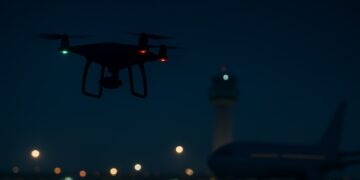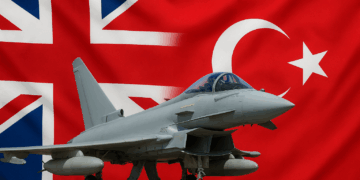For years, the Saab Gripen has sought to gain a stronger foothold among major air forces around the world through national procurement programmes. At times, the Swedish aircraft manufacturer has succeeded – as in Brazil. For larger air forces, however, Saab has lost out to its European and American competitors.
Now, changing security conditions and shifting geopolitics are reshaping the playing field – one in which the Saab Gripen could finally find its stride.
Last week marked a potential turning point for Sweden’s aerospace ambitions. President Volodymyr Zelensky and Swedish Prime Minister Ulf Kristersson signed a letter of understanding for the possible delivery of 100 to 150 Saab Gripen E fighter jets. The deal would more than double Ukraine’s air force and make Saab a far more prominent player in European defence.
Hard competitions
The Gripen E – previously known as the Gripen NG – has long competed in tenders for air force modernisation programmes around the world. It took part, for instance, in the Dutch F-16 replacement process. At the time, the Netherlands was aiming to purchase around 30 F-35s, while Saab offered more than 80 Gripens. Dutch MPs even travelled to Linköping to view the aircraft firsthand, but the Netherlands ultimately chose the fifth-generation Lockheed Martin F-35.
The reason was clear: the Netherlands wanted to operate in the “highest spectrum of combat capability” and to contribute to NATO’s nuclear deterrence mission – a task the Swedish aircraft cannot fulfil.
Worldwide customers
That does not mean the Gripen is outmatched in air combat. Far from it. The jet is difficult to detect by radar, highly manoeuvrable and fast, and equipped with advanced sensor and counter-measure systems that provide excellent situational awareness and defensive capabilities.
The Gripen E, an evolution of the current Gripen C/D models, counts the Swedish Air Force as its largest customer. The earlier versions are flown by Hungary, the Czech Republic, South Africa and Thailand. Brazil has ordered 36 of the E/F variant. While Saab’s production numbers do not yet rival those of the Eurofighter, interest is growing, not least because of concerns over the unpredictability of U.S. politics.
‘Less reliance U.S.’
Colombia, for instance, is expected to choose the Saab Gripen by the end of this year – a move aimed at reducing the country’s reliance on U.S. military systems. There are also concerns over potential U.S. export and delivery restrictions on aircraft parts that include American components. Similar considerations have been voiced in Peru, which has selected 24 Saab Gripens, though the final sale has yet to be formally approved.
If the letter of intent between Ukraine and Sweden does turn into an actual delivery, it would bring a new challenge: Sweden would have to significantly scale up production capacity to meet such a large order alongside other international commitments.
What is clear, however, is that shifting global security dynamics and changing geopolitics are giving Europe’s aircraft manufacturer a powerful tailwind.

























